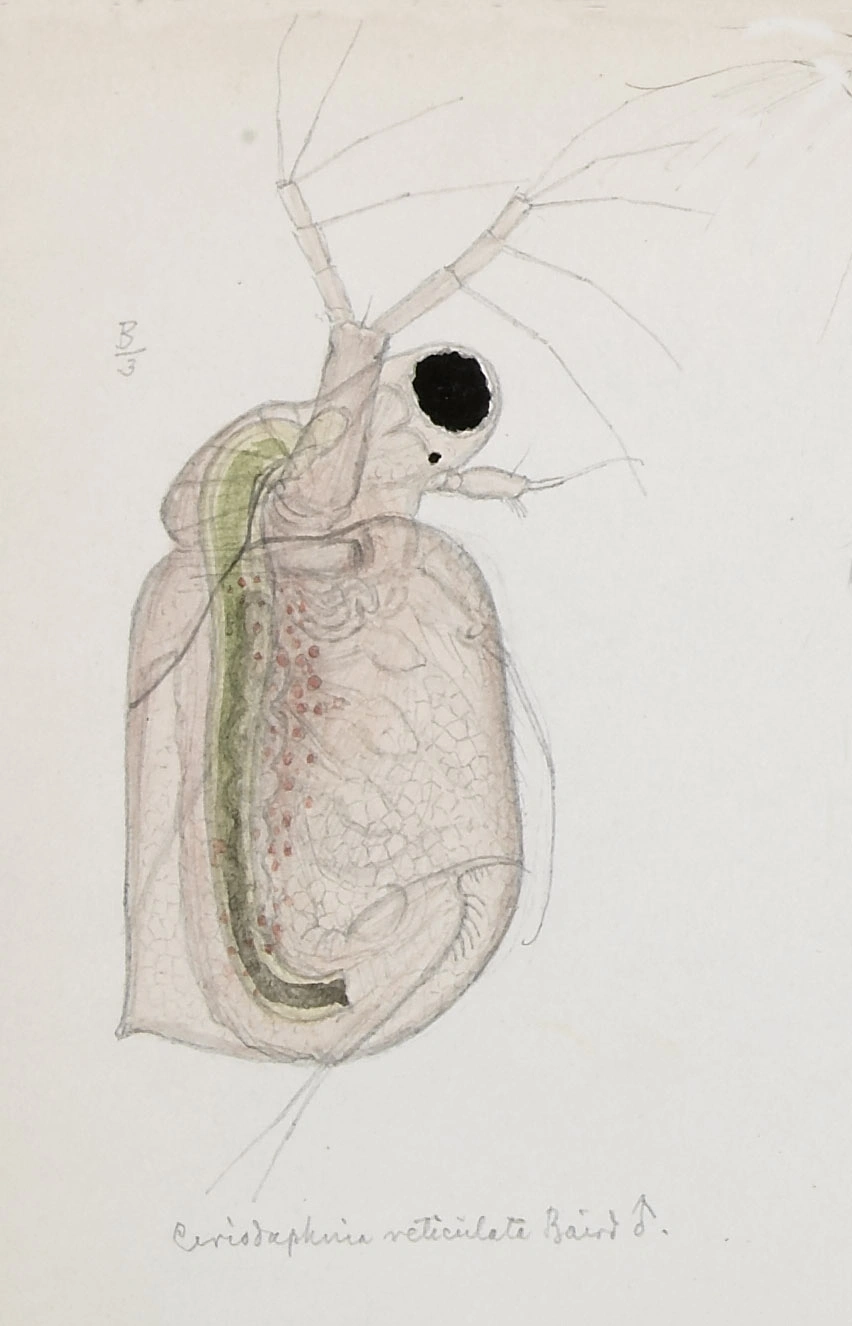Ceriodaphnia reticulata
Ceriodaphnia reticulata may occur both in small tarns, where it may be the dominating cladocer, as well as in the littoral of large lakes. The abdominal claw is characterized by having a varying number of coarse teeth close to the base.
Key characteristics
Ceriodaphnia reticulata (female)
Ceriodaphnia reticulata (male)
Ceriodaphnia reticulata has a more oval form compared with other species in this genus. Its forehead has a distinct incurvature immediately above the eye and the first pair of antennae is smaller than in the other species. The width of the post abdomen is almost uniform bearing about eight spines on each side. The abdominal claw is easily distinguished from the other Ceriodaphnia species having a varying number of coarse teeth close to the base. Though it has a very light colour, it often has a tinge of red, grey and yellow colours.
Female: Length 0.5–1.7 mm
Male: Length 0.5–0.8 mm
Ecology and distribution
C. reticulata is a littoral species found in 4,4 % of the water bodies, mainly situated north and east of Oslo. There is also one record from a small pond in northern Norway (Troms County). The great majority of records are from localities situated 100–300 m a.s.l. and it is never above 600 m a.s.l. C. reticulata occurs in both small tarns, where it may be the dominating cladocer, as well as in the littoral of large lakes. It is associated with neutral, relatively electrolyte rich water.
| Vitenskapelig navn | < 4,5 | 4,5 - 4,9 | 5,0 - 5,4 | 5,5 - 5,9 | 6,0 - 6,4 | 6,5 - 7,0 | 7,0 - 7,4 | > 7,5 |
|---|---|---|---|---|---|---|---|---|
| 0 | 0 | 0,8 | 1,8 | 4,6 | 7 | 9,9 | 15,9 |
| Vitenskapelig navn | < 1,0 | 1,0 - 1,4 | 1,5 - 1,9 | 2,0 - 2,9 | 3,0 - 3,9 | 4,0 - 4,9 | 5,0 - 6,9 | 7,0 - 9,9 | > 10,0 |
|---|---|---|---|---|---|---|---|---|---|
| 0 | 0,8 | 0,8 | 2,3 | 1,7 | 3,7 | 7,1 | 16,7 | 24,7 |
| Vitenskapelig navn | < 0,01 | 0,01 - 0,09 | 0,1 - 0,9 | 1,0 - 9,9 | 10,0 - 99 | 100 - 999 | > 1000 |
|---|---|---|---|---|---|---|---|
| 28,4 | 14,4 | 6,9 | 1,3 | 1,5 | 1,3 | 8,7 |
| Vitenskapelig navn | < 100 | 100-299 | 300-499 | 500-699 | 700-999 | >1000 |
|---|---|---|---|---|---|---|
| 3,6 | 11,1 | 1 | 0,3 | 0 | 0 |


